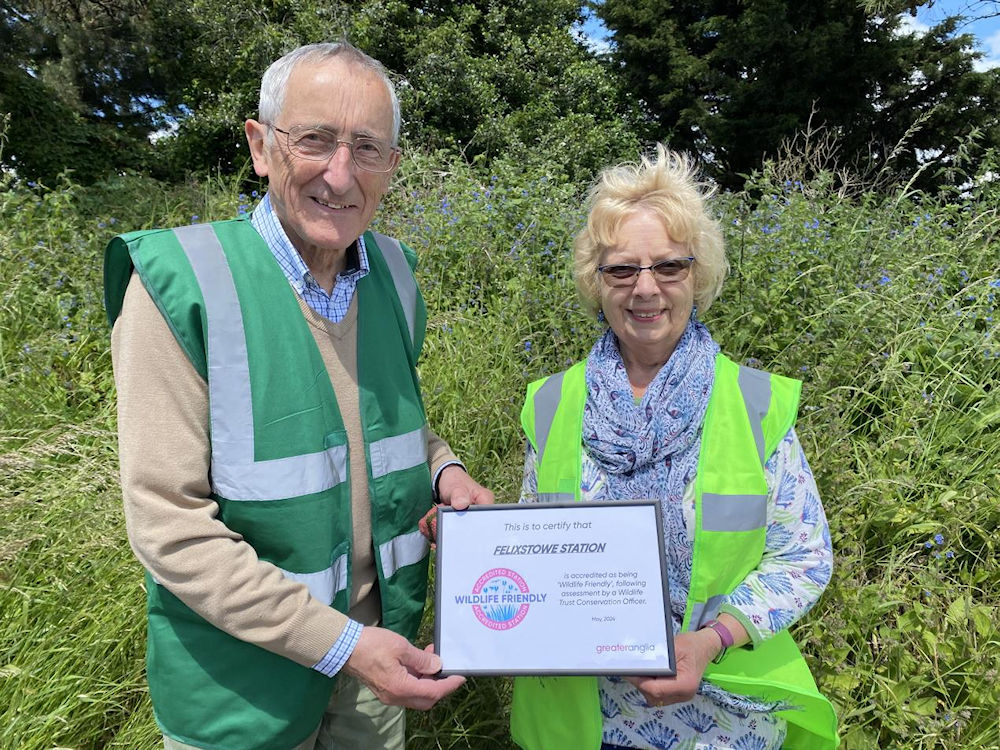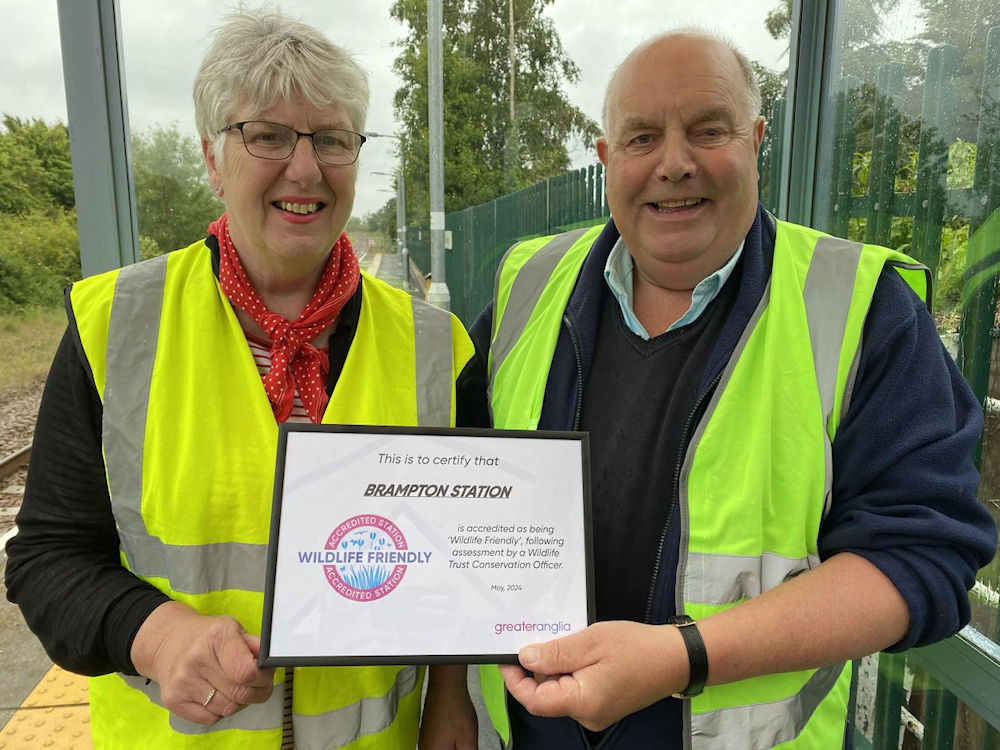More Suffolk Stations Are Now Wildlife Friendly Accredited
Three more East Suffolk Lines stations and one on the Wherry Lines have received ‘Wildlife Friendly’ accreditation. The status recognises the work of community volunteers to improve biodiversity and support nature.
Train operator Greater Anglia has partnered with the region’s Wildlife Trusts to formally recognise the achievements of its teams of volunteer ‘station adopters’ to create wildlife havens at stations across its network, through the new ‘Greater Anglia Wildlife Friendly Stations Accreditation Scheme.’
Each assessment also offers tips and advice on how to make the stations more wildlife friendly and the assessment reports can also be used as examples of best practice, to help spread good ideas with all Greater Anglia’s station adopters and adopter groups.
On the East Suffolk Lines, Brampton, Derby Road, and Felixstowe have each received the accreditation; the latest station on the Norwich – Lowestoft Wherry Lines to be accredited is Oulton Broad North. The accredited status was awarded following assessment by a Suffolk Wildlife Trust Conservation Officer to determine how well the stations support local flora and fauna.


In 2021, a large area at the front of Derby Road rail station was planted with wildflowers by a team of volunteers. The area now blooms every year providing an important source of nectar for pollinating insects in an urban area.
At Felixstowe, volunteers Richard and Jenny Holland have planted bee friendly tubs and planters and also maintain a large wild area full of trees, wildflowers, nettles and brambles to encourage butterflies and their caterpillars and provide shelter for birds.
At Oulton Broad North station, station adopter volunteers, Stuart and Jenny Hearth, have created a floral display in an old boat and planted flowers along the platform in wooden planters funded by the Wherry Lines Community Rail Partnership.Brampton station has also been planted with bee friendly plants in the flower tubs on the platform by station adopters Kim and Glyn Buck, and also features a wild area in a disused section alongside the tracks.
James Hogg, Development Officer at the Norfolk Wildlife Trust, the lead Trust for the initiative, said:
“The alarming decline in the abundance of wildlife and the plight of species under threat means that just protecting the nature we have left is not enough; we need to put nature into recovery, and to do so at scale and with urgency.
“This project with Greater Anglia is a fantastic example of how people can transform nature-poor areas into new nature-rich places – and change the way we think about land, seizing opportunities to help nature outside traditional nature reserves.”
Greater Anglia’s Customer and Community Engagement Manager, Alan Neville, said:
“We are delighted to partner with the region’s wildlife trusts to formally recognise the valuable work of our station adopter volunteers in supporting wildlife and improving their local environment.
“I would like to congratulate the volunteer teams at Brampton, Derby Road, Felixstowe, and Oulton Broad North on receiving this recognition and thank them for the incredible work that they are doing that is helping to support biodiversity locally.
“I’d also like to thank our community rail partnerships for their part in aiding our adopters’ efforts with funding and support.”
Rail stations in East Anglia are increasingly becoming havens for local wildlife thanks to the efforts of over 300 volunteers who last year transformed over 9,000 square metres of land into thriving wildlife gardens.
In a recent survey, Greater Anglia station adopters reported a wide range of creatures visiting their stations, including many different types of butterflies as well as bees, slow worms, bats, foxes, toads, lizards, deer, and many varieties of birds.
Over the last 20 years, since the start of station adoption in East Anglia, the initiative has thrived, so that the vast majority of Greater Anglia stations now have station adopters. On the East Suffolk Lines that number stands at 100%.
These ongoing increases in the areas adopted and the wildlife being seen on the stations show that the adopters are really playing their part in helping to make stations more biodiverse, as well as becoming more attractive gateways to the communities they serve.
